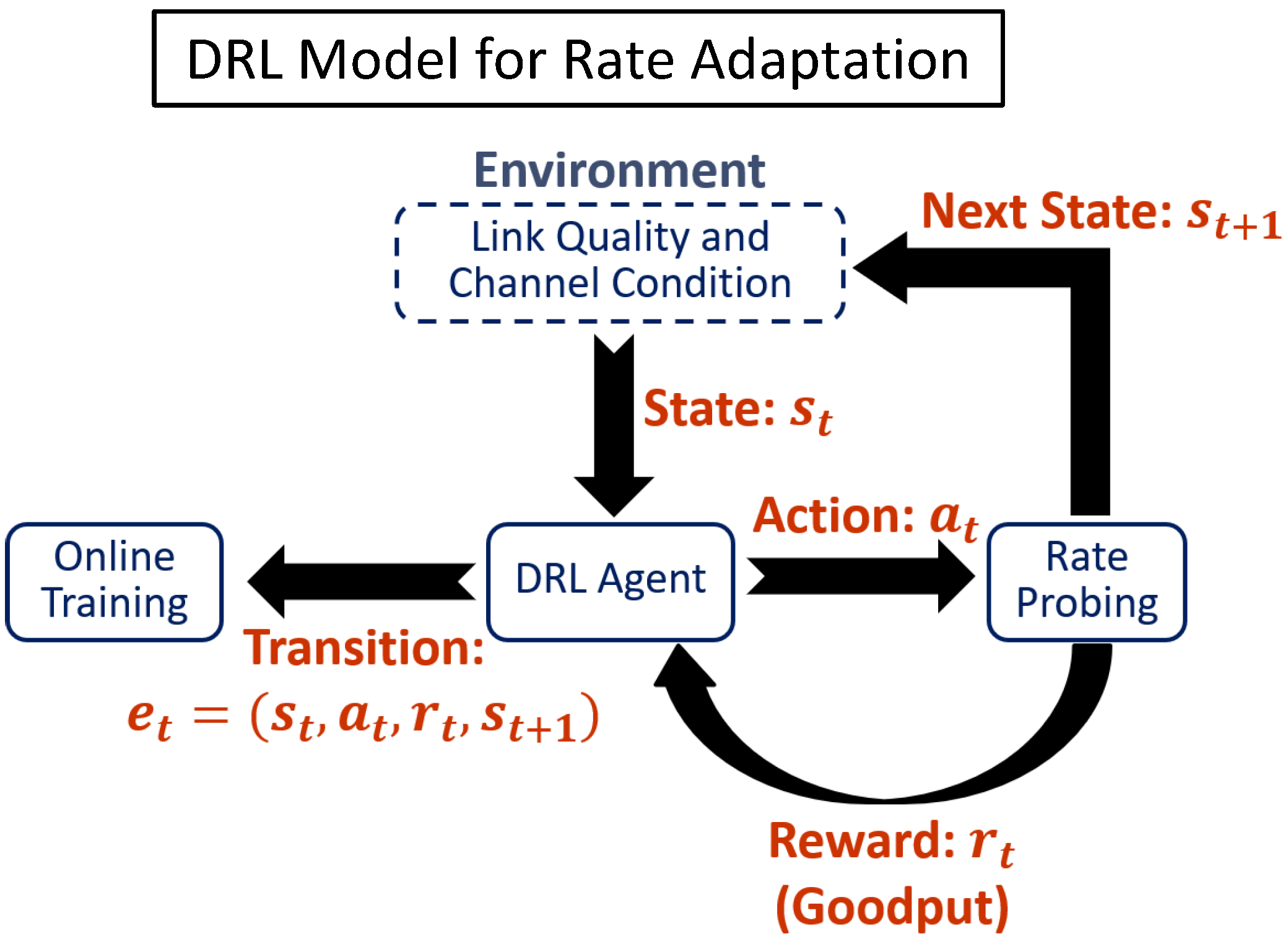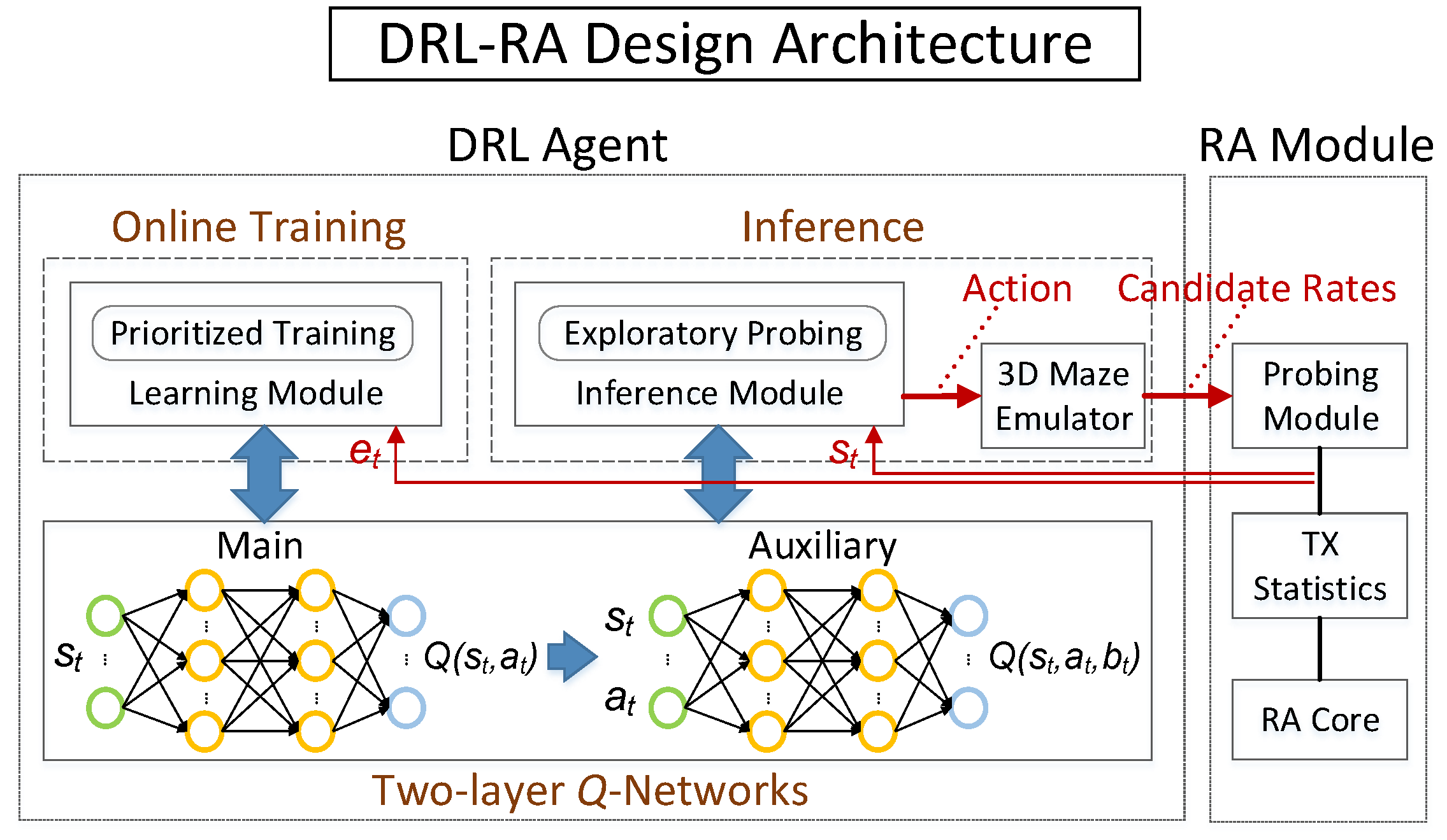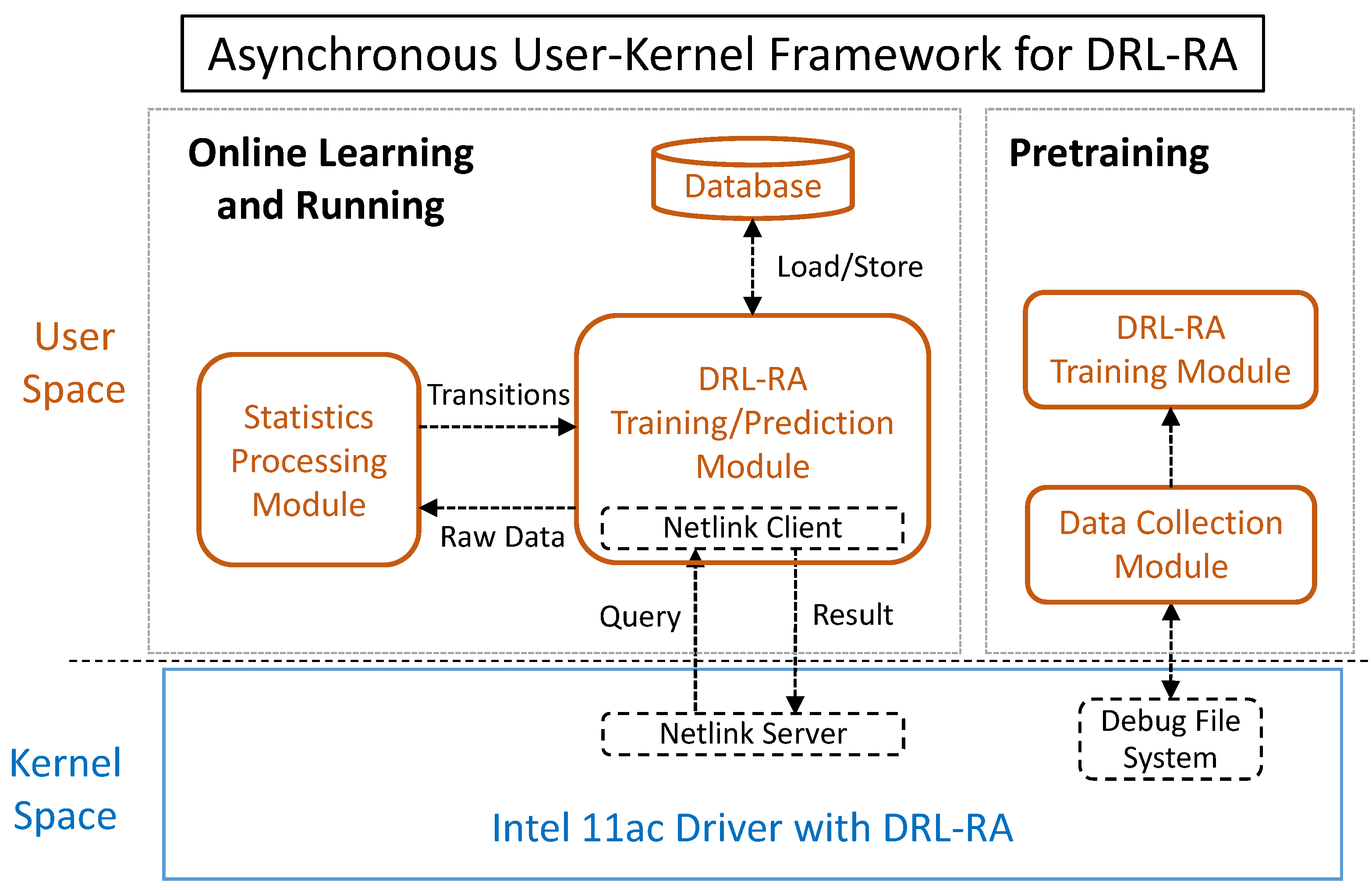| Technical Name | Deep Reinforcement Learning based Wi-Fi Networking for Performance Enhancement: Considering Off-The-Shelf 802.11ac NICs as a Case Study | ||
|---|---|---|---|
| Project Operator | National Chiao Tung University | ||
| Project Host | 李奇育 | ||
| Summary | IEEE 802.11ac has become the mainstream Wi-Fi technology that supports gigabit speeds and offers a great number of rate options. It can be a challenge to rate adaptation (RA) solutions, which find the best rate over time to achieve the highest throughput in varying channel conditions, since many rate options can prevent RAs from locating the best rate timely. We study two representative 802.11ac RAs, Iwlwifi and Minstrel, which are Intel and Linux default RAs respectively, and observe that they suffer from low throughput in mobility/interference cases due to their non-scalability. We apply deep reinforcement learning to designing an intelligent RA solution (DRL-RA), whose online learning capability can automatically derive low-overhead paths to approach the best rates. We develop DRL-RA using the Intel Wi-Fi driver and Google TensorFlow with an asynchronous framework across kernel and user spaces. DRL-RA can outperform Iwlwifi and Minstrel by up to 821.4% and 242.8%, respectively. |
||
| Scientific Breakthrough | We have the following three major breakthroughs. |
||
| Industrial Applicability | The developed technology can be applied to the network communication industry, especially for the vendors of Wi-Fi AP and NIC, as well as other related system vendors. It mainly consists of two techniques. First, the deep learning application framework for kernel modules (here, Wi-Fi drivers) can allow the vendors to enable intelligent services on their wireless and networking system products by applying AI technique to customizing or maximizing system/network performance for users. Second, the deep reinforcement learning (DRL) based rate adaptation solution can enhance the Wi-Fi performance for Wi-Fi chip and equipment vendors. Its DRL-based design architecture with the use of Google Tensorflow can be also applied to other functions. |
||
| Keyword | deep learning Wi-Fi 802.11ac reinforcement learning machine learning wireless networks wireless throughput off-the-shelf access point wireless driver | ||
- chiyuli@cs.nctu.edu.tw
other people also saw







